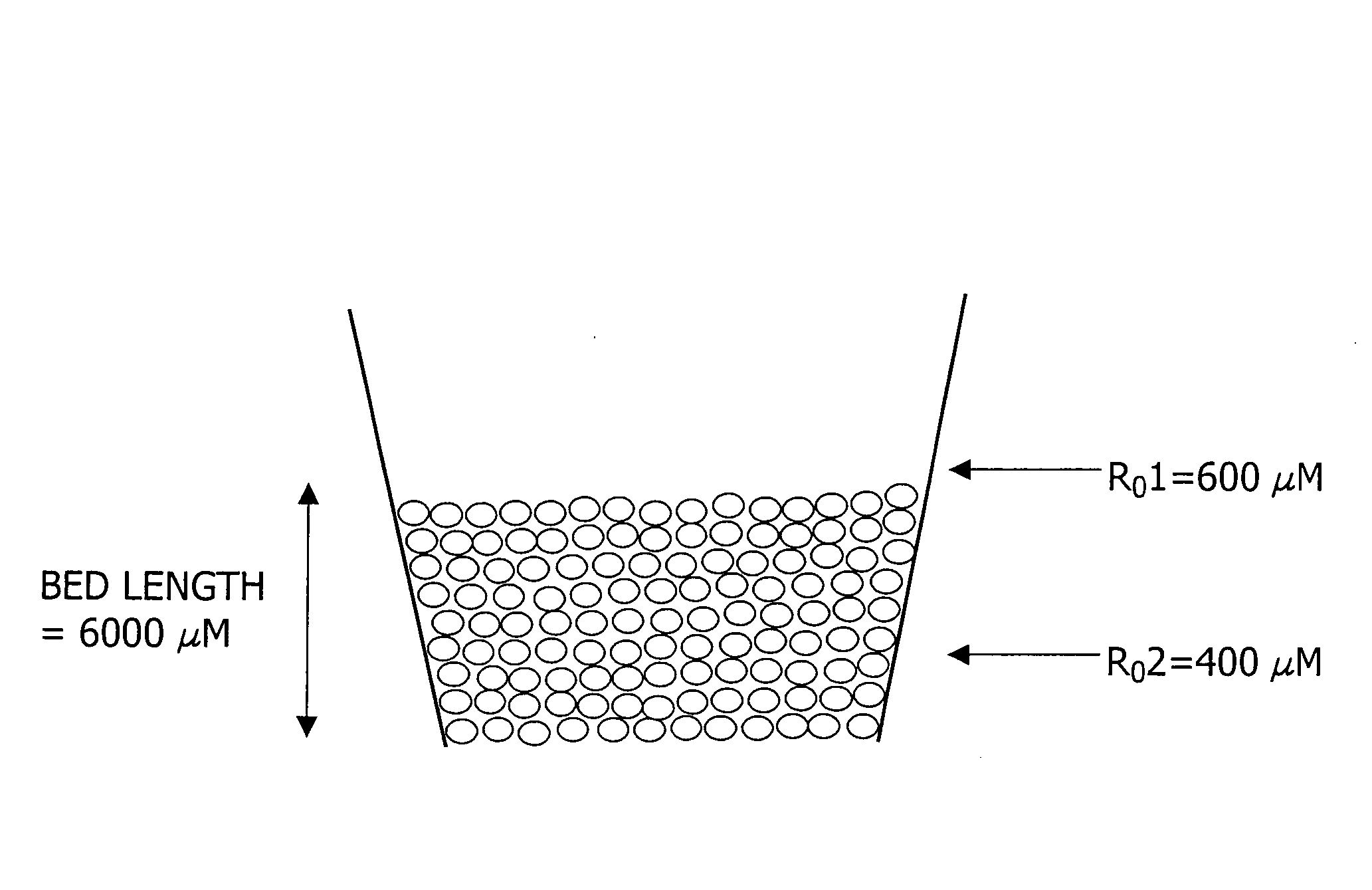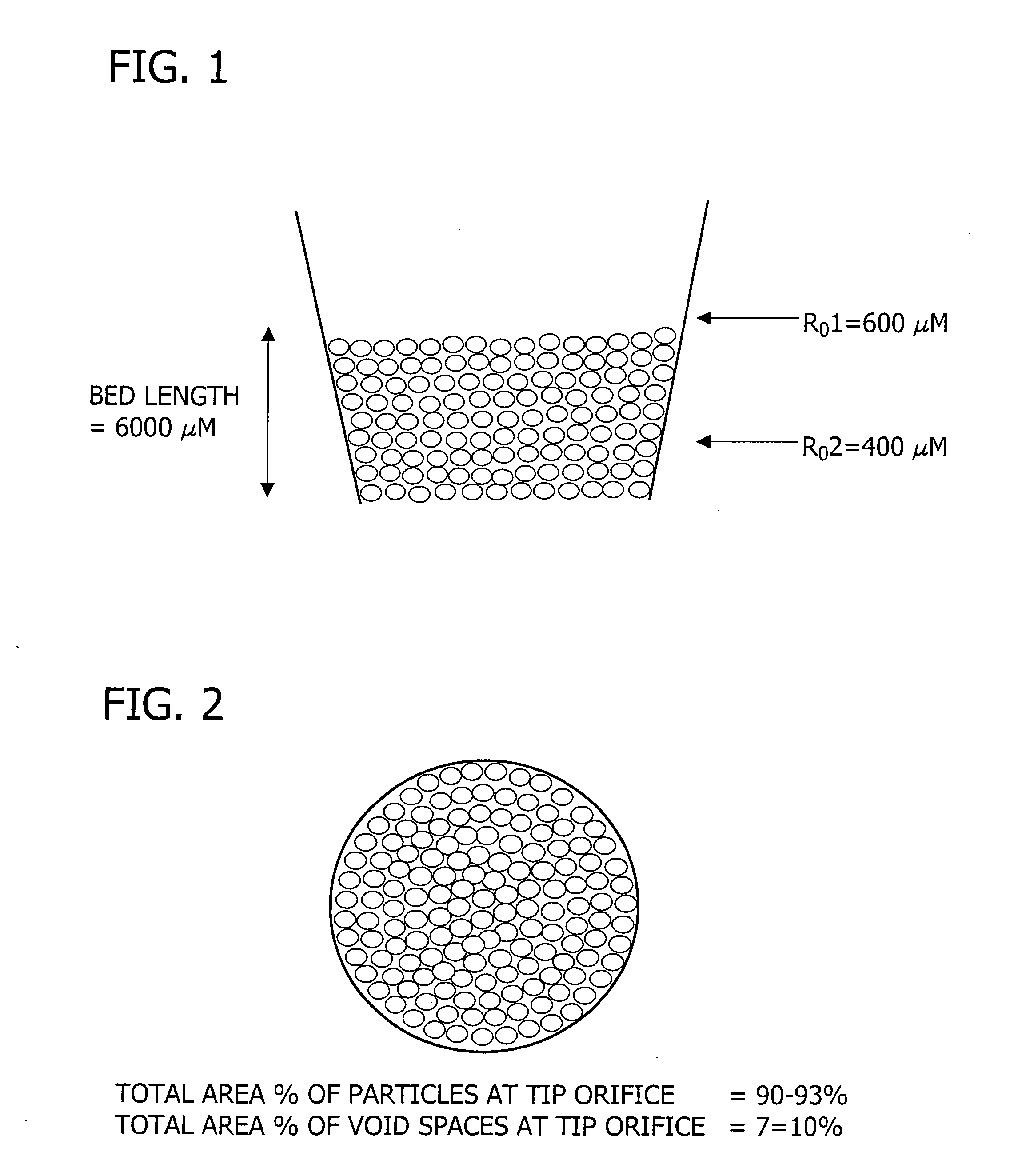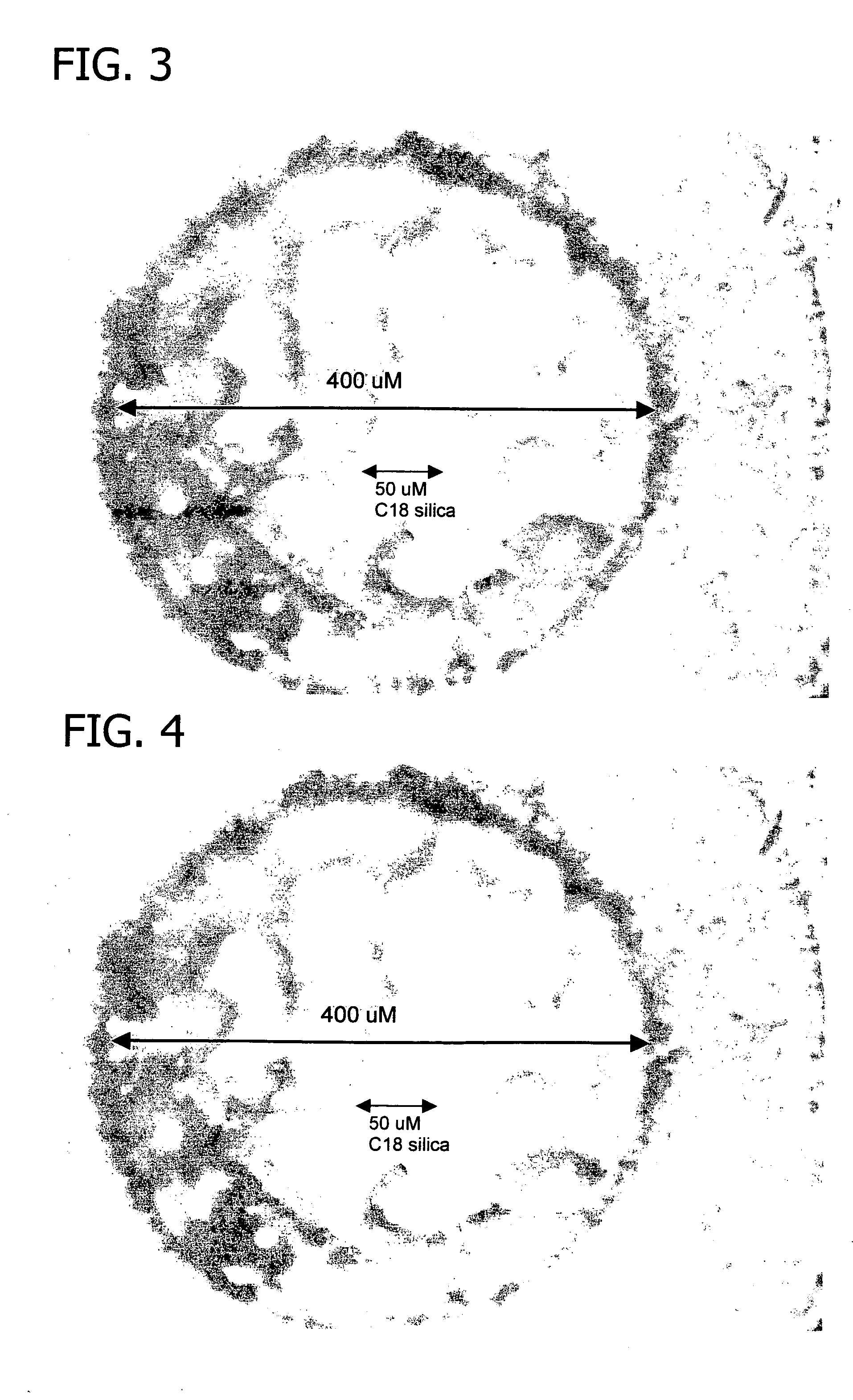Polysilazane thermosetting polymers for use in chromatographic systems and applications
a technology of thermosetting polymer and chromatographic system, which is applied in the direction of filter regeneration, alkali metal oxide/hydroxide, and organic compounds of silicon organic compounds, etc., can solve the problems of further improvement, reducing production yield, and/or requiring post-coating cleaning
- Summary
- Abstract
- Description
- Claims
- Application Information
AI Technical Summary
Benefits of technology
Problems solved by technology
Method used
Image
Examples
example 1
[0147] A ⅛″ thick aluminum coupon was cleaned thoroughly with soap and water removing any surface debris with a steel wool pad. The aluminum sample was then rinsed with distilled water and placed in an oven at 200° C. for approximately 10 minutes. A solution consisting of thermoset polysilazane (2.5 g), dicumyl peroxide (0.05 g) and pentane (50 ml) was loaded into a touch up spray gun (Badger Model 400). The aluminum coupon was removed from the oven and immediately sprayed creating a uniform, vulcanized coating on its surface. The sample was then placed in an oven for further curing to the preceramic state via an oven ramp at 200° C. for 10 minutes, then at 450° C. for 10 minutes. The film appeared homogenous, crack free with no signs of delamination when studied under magnification with a light microscope.
example 2
[0148] A ¾″ copper tube was cleaned thoroughly with soap and water removing any surface debris with a steel wool pad. The copper sample was then rinsed with distilled water and placed in an oven at 200° C. for approximately 10 minutes. A solution consisting of thermoset polysilazane (2.5 g), dicumyl peroxide (0.05 g) and pentane (50 ml) was loaded into a touch up spray gun (Badger Model 400). The copper tube was removed from the oven and immediately sprayed creating a uniform, vulcanized coating on its surface. The sample was then placed in an oven equipped with a helium purge vessel for further curing to the preceramic state via an oven ramp at 200° C. for 10 minutes, then at 450° C. for 10 minutes. The film appeared homogenous, crack free with no signs of delamination when studied under magnification with a light microscope.
example 3
[0149] The inner diameter of a 4 mm HPLC column was cleaned thoroughly with methylene chloride and permitted to air dry. A solution consisting of thermoset polysilazane (2.5 g), dicumyl peroxide (0.05 g) and pentane (50 ml) was prepared as the coating solution. A lint free applicator was dipped in the solution and whisked to remove excess material. The inner surface of the column was painted with the applicator resulting in a thin even coating. The column was then placed in an oven in the upright position for curing to the preceramic state via an oven ramp at 200° C. for 10 minutes, then at 450° C. for 10 minutes. The coating was subjected to low pH mobile phase conditions without degradation.
PUM
| Property | Measurement | Unit |
|---|---|---|
| particle size | aaaaa | aaaaa |
| particle size | aaaaa | aaaaa |
| temperature | aaaaa | aaaaa |
Abstract
Description
Claims
Application Information
 Login to View More
Login to View More - R&D
- Intellectual Property
- Life Sciences
- Materials
- Tech Scout
- Unparalleled Data Quality
- Higher Quality Content
- 60% Fewer Hallucinations
Browse by: Latest US Patents, China's latest patents, Technical Efficacy Thesaurus, Application Domain, Technology Topic, Popular Technical Reports.
© 2025 PatSnap. All rights reserved.Legal|Privacy policy|Modern Slavery Act Transparency Statement|Sitemap|About US| Contact US: help@patsnap.com



